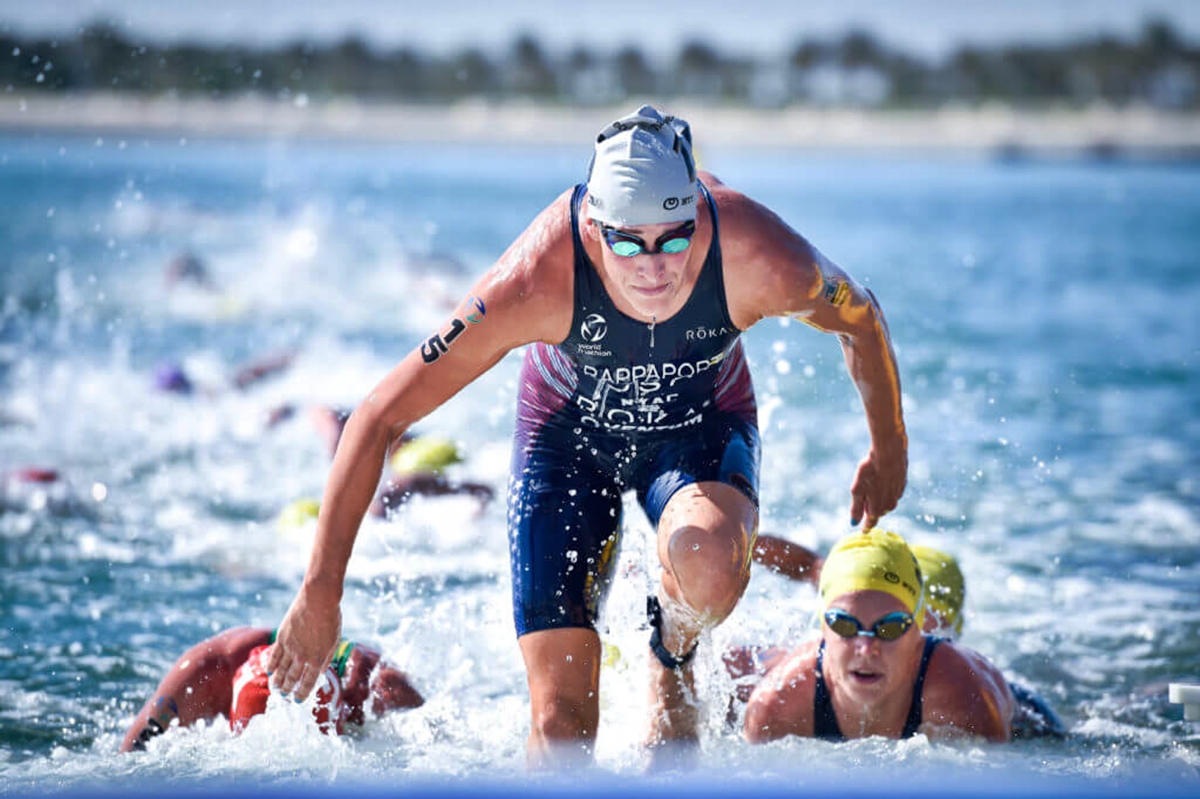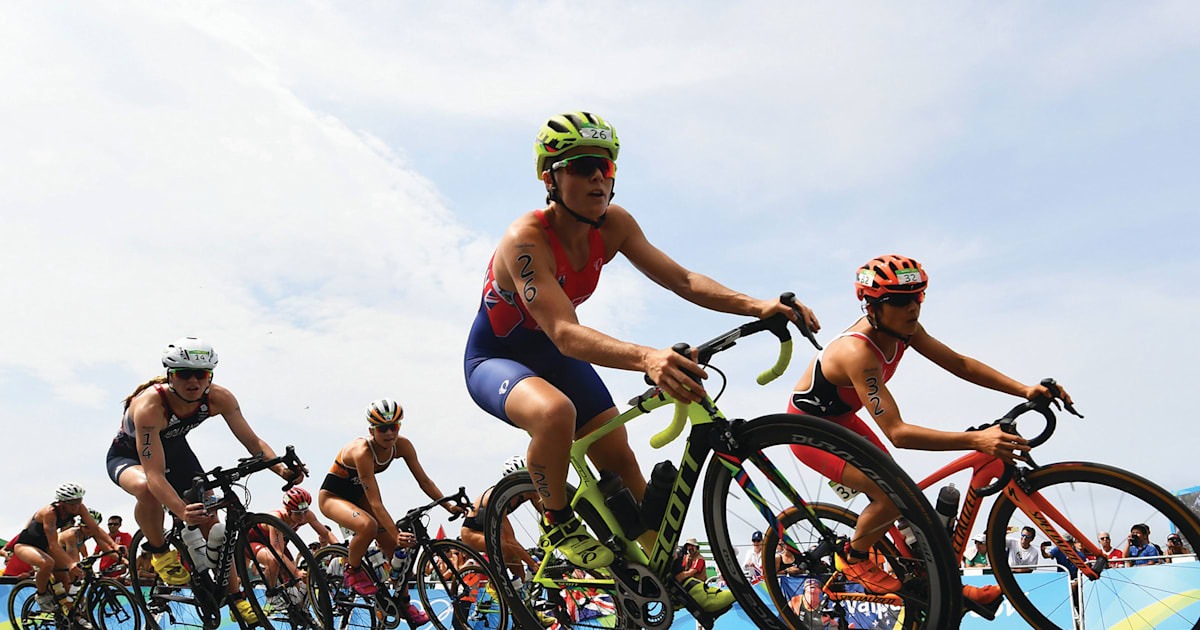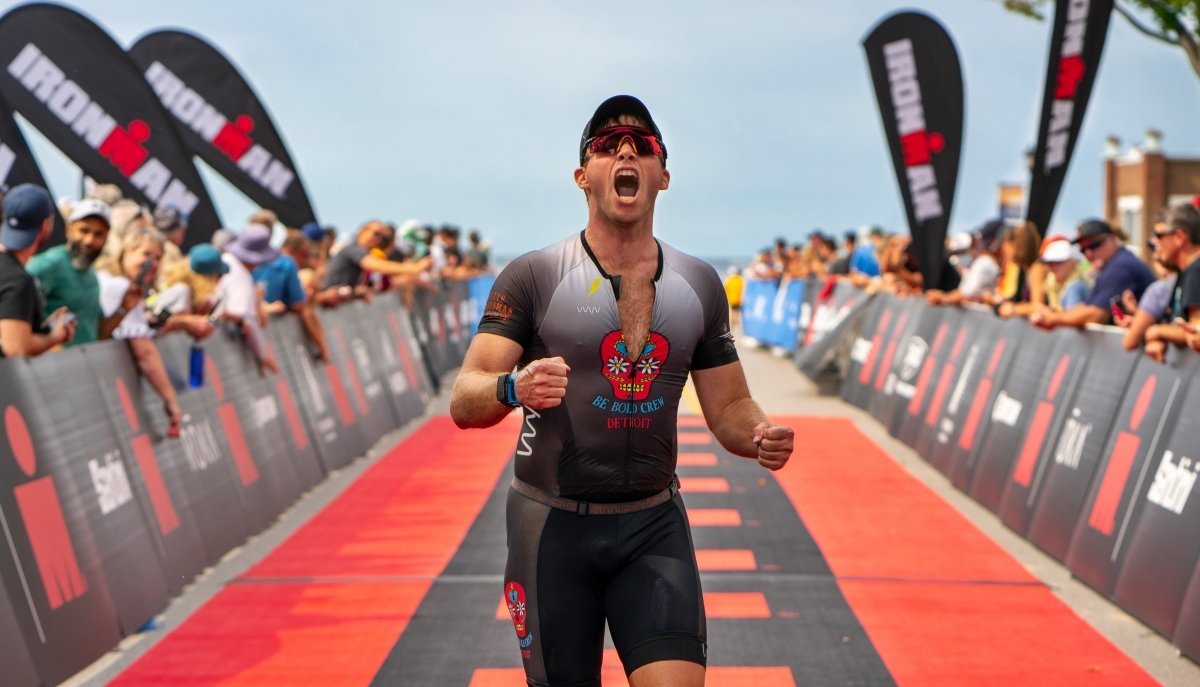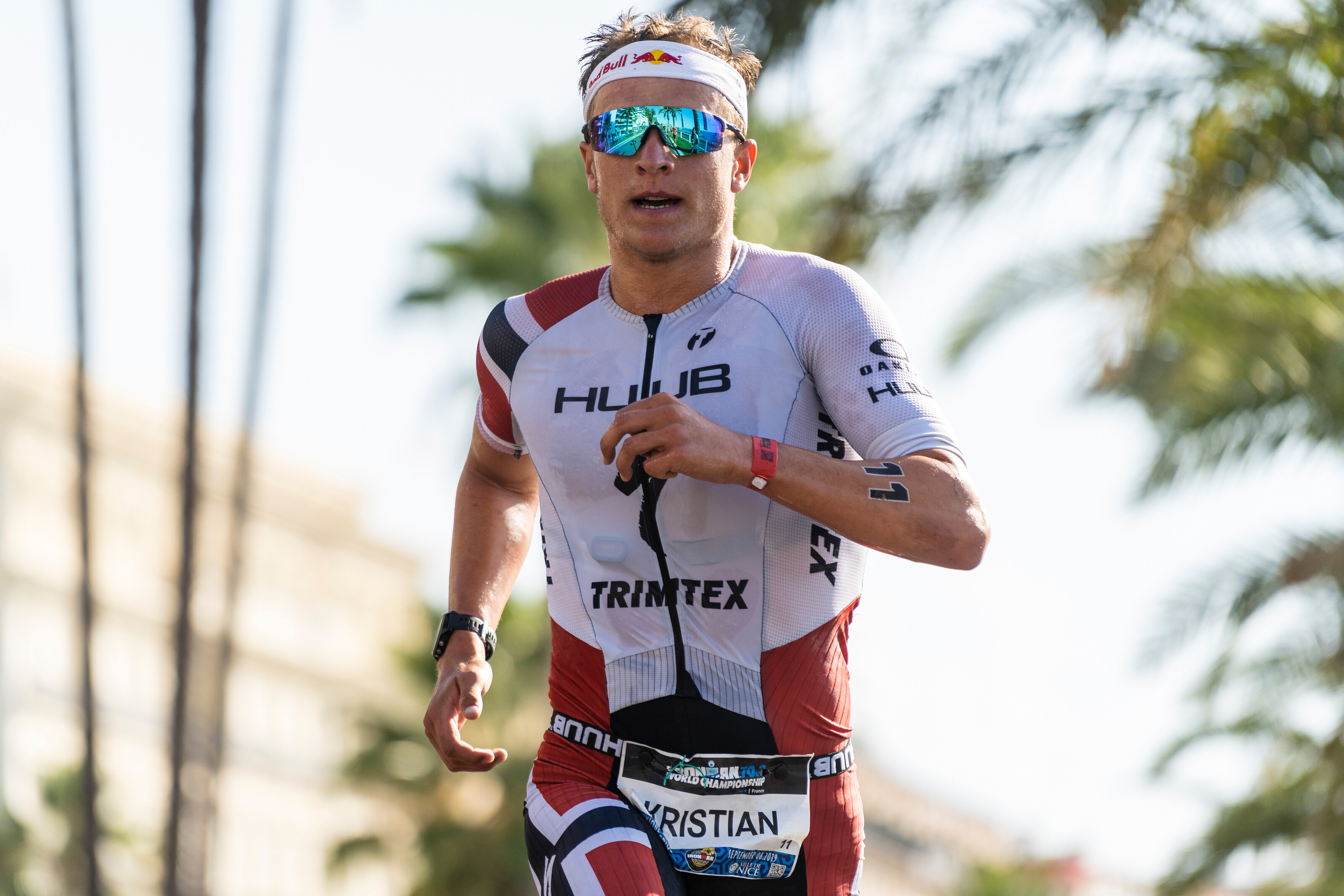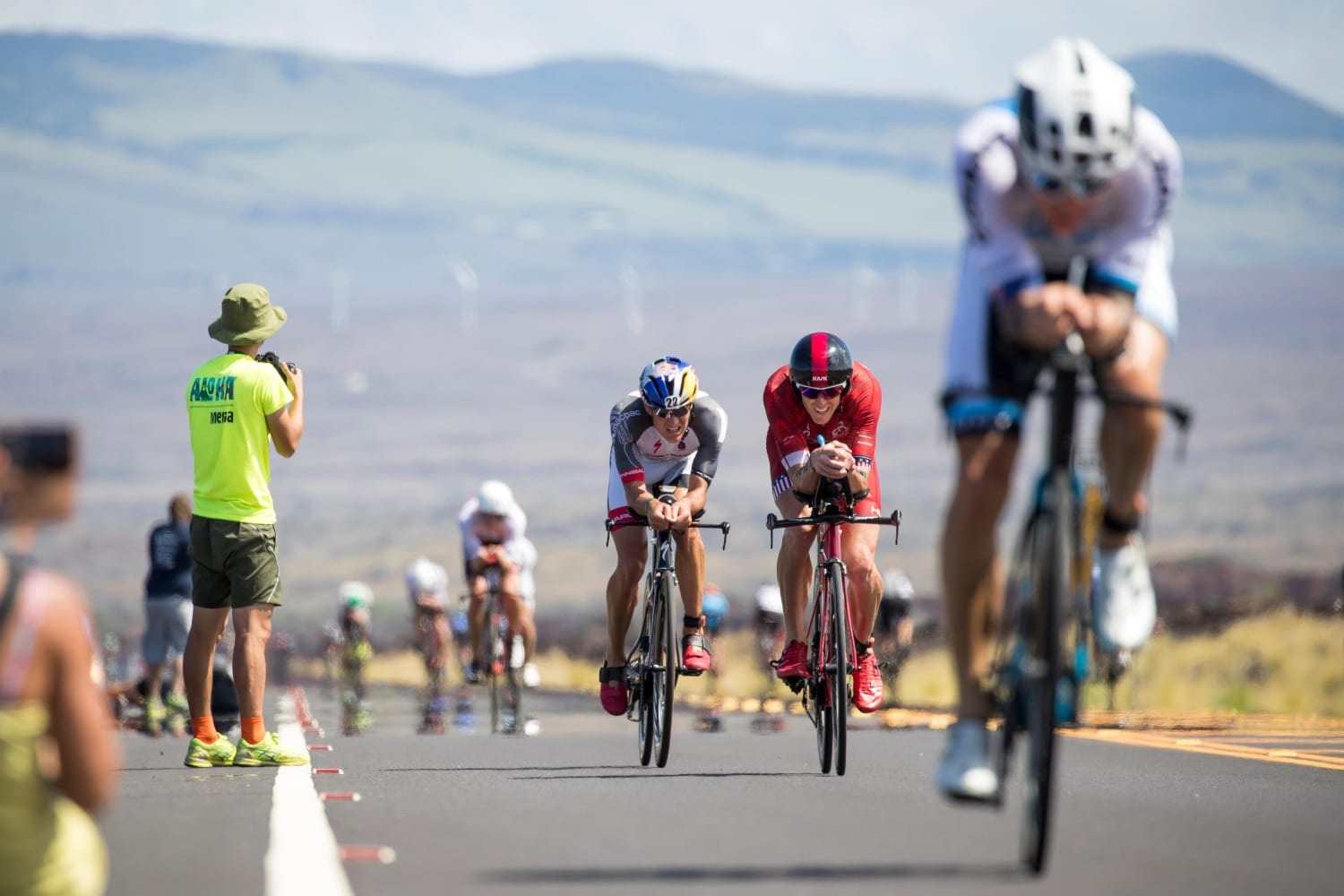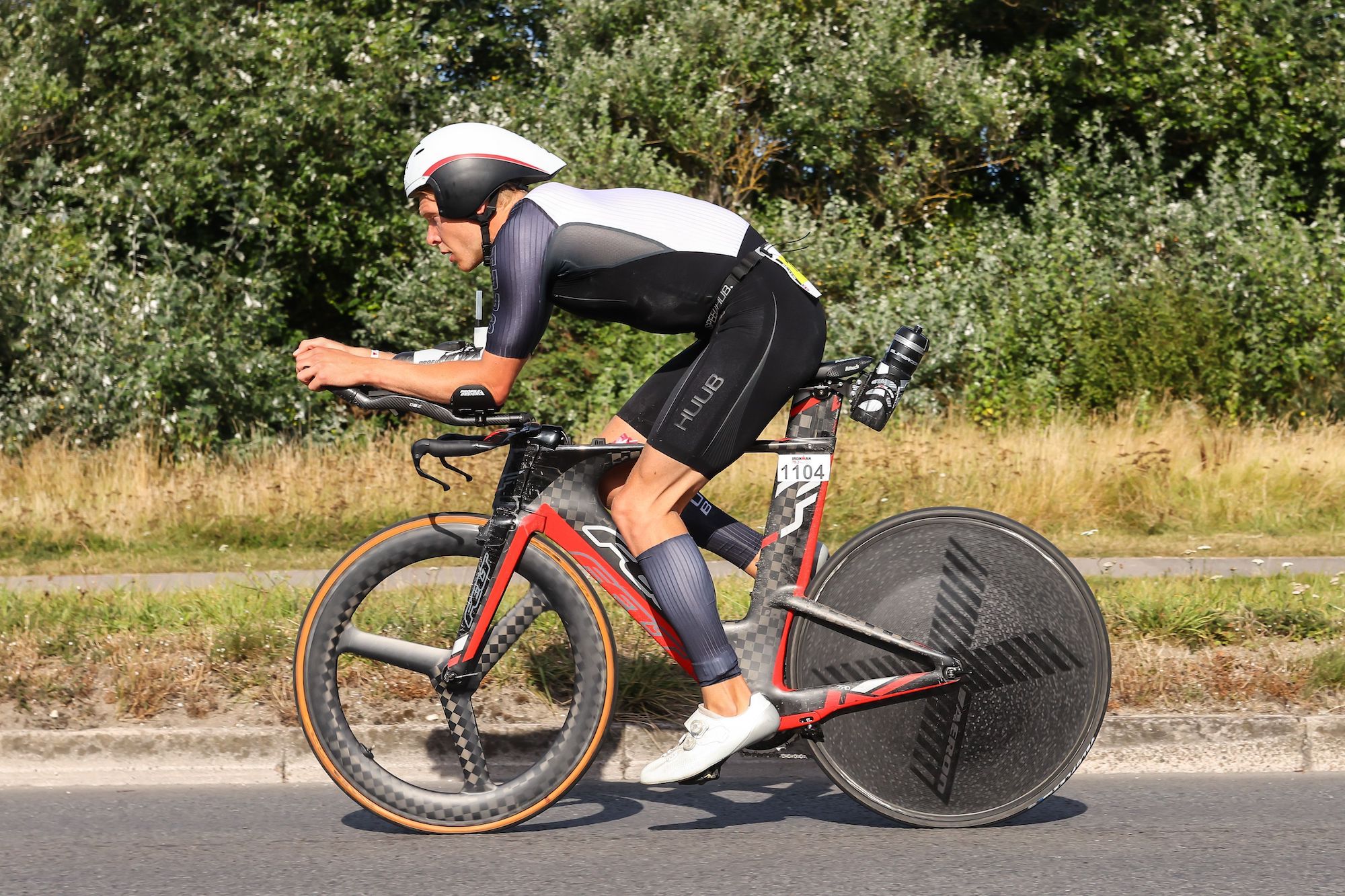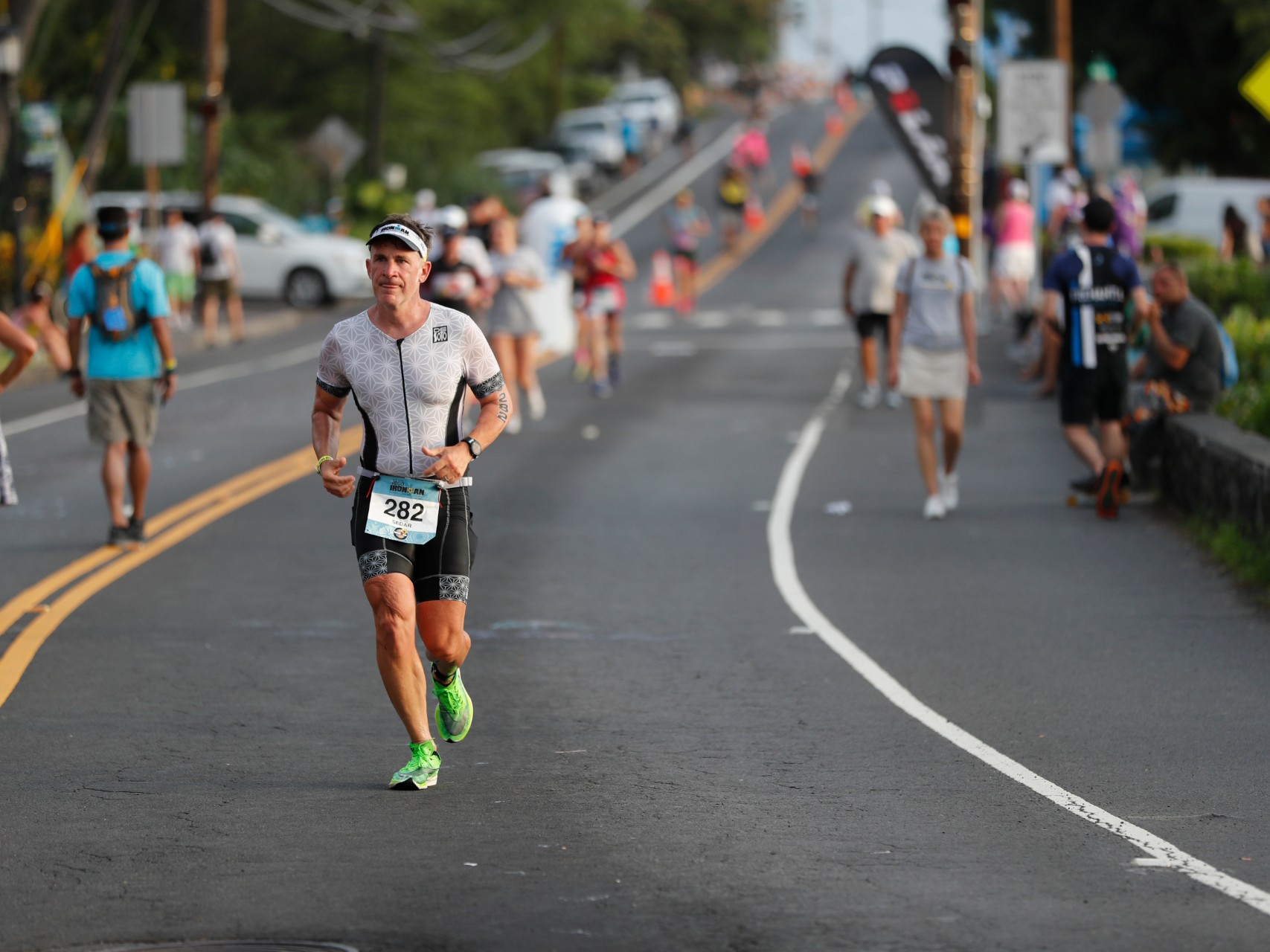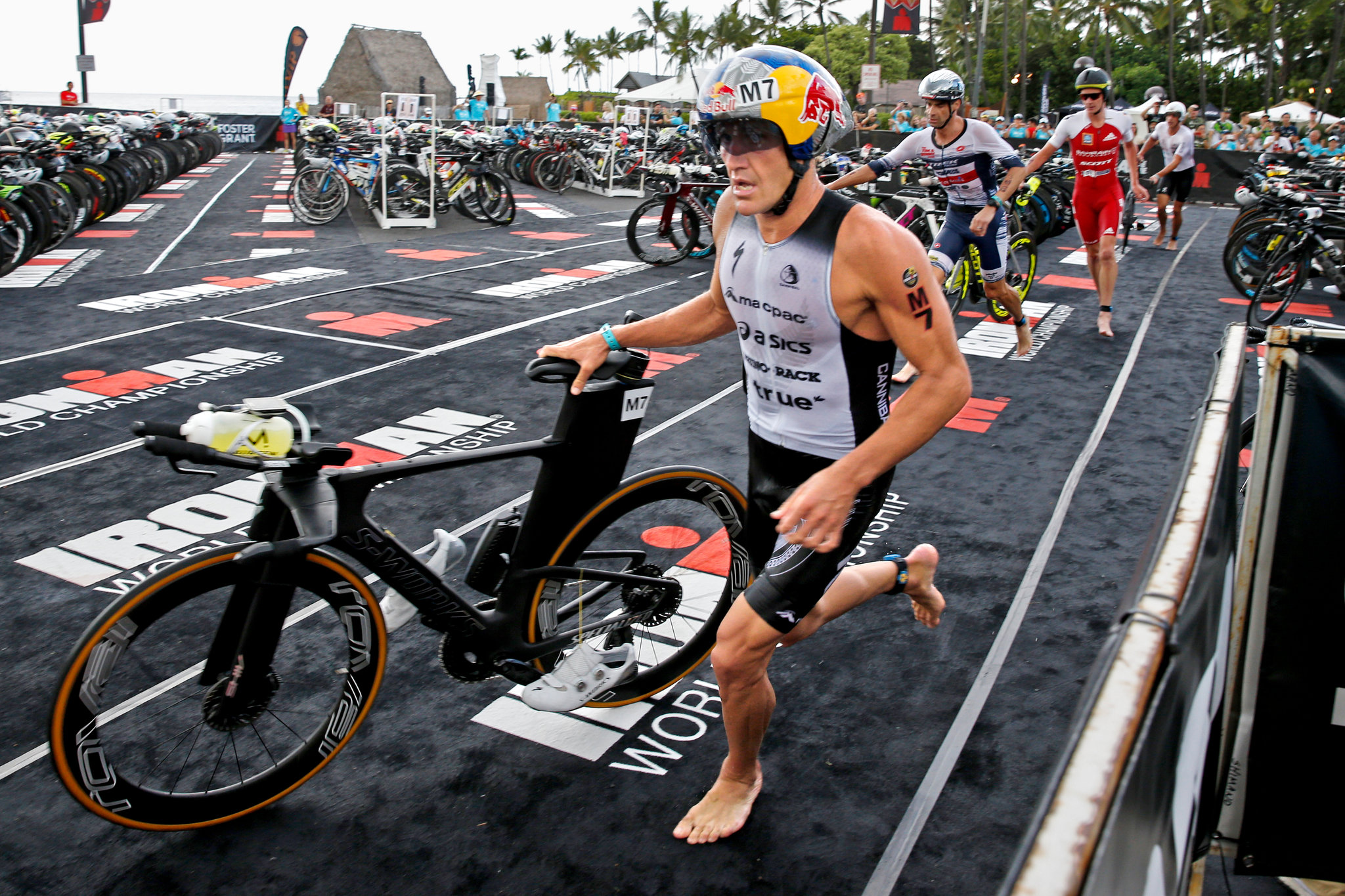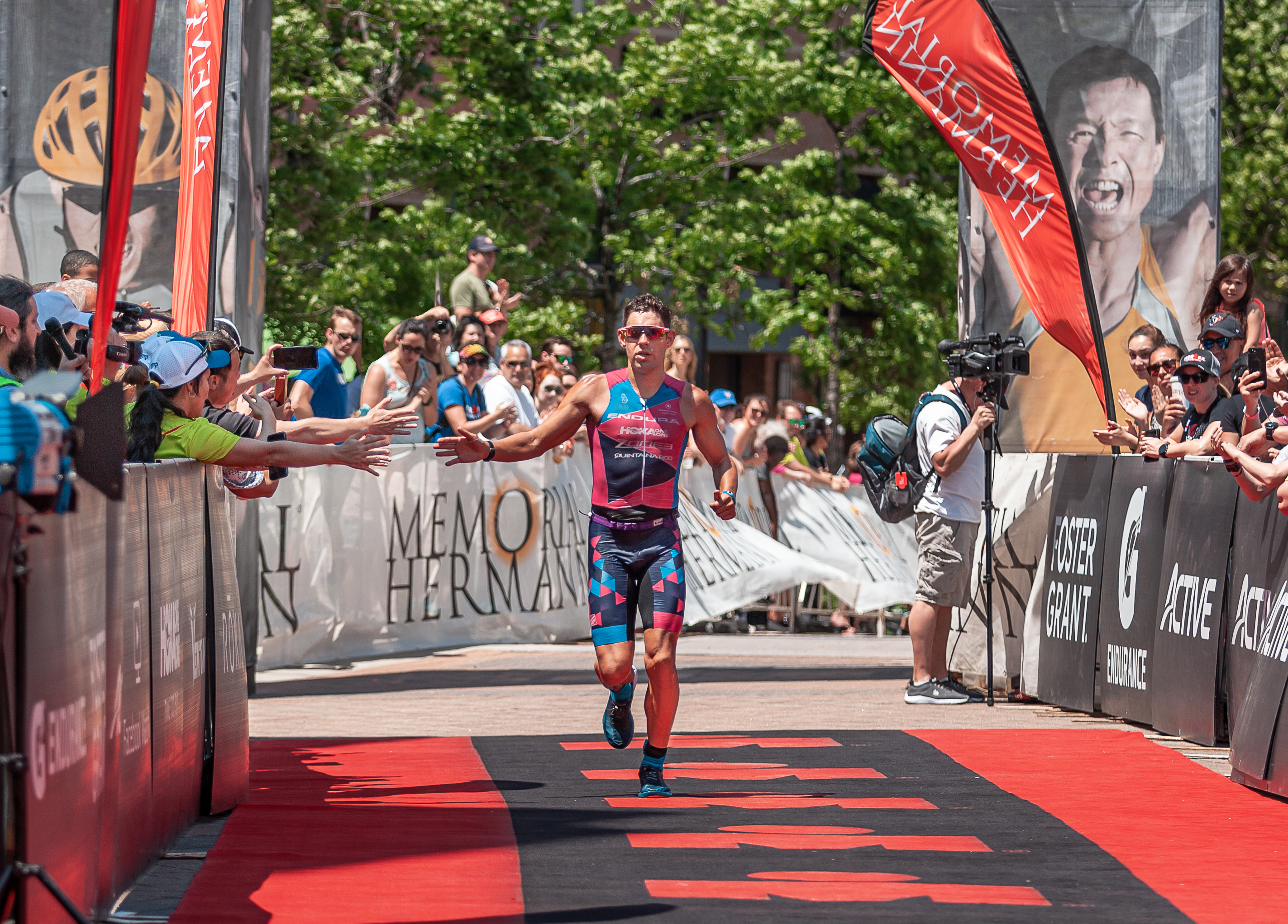

Featured
How Many Miles Is The Ironman Triathlon
Modified: January 2, 2024
Discover how many miles the Ironman Triathlon covers and get inspired by the featured athletes who conquer this grueling endurance event.
Introduction
Welcome to the exciting world of the Ironman Triathlon! If you are intrigued by this grueling endurance event and want to know more about it, you have come to the right place. In this article, we will explore the ins and outs of the Ironman Triathlon, including its history, distances, and the training involved.
The Ironman Triathlon is a legendary race that pushes athletes to their limits both mentally and physically. It tests their endurance, strength, and determination as they swim, bike, and run their way to the finish line. It is not for the faint of heart, but for those who are willing to push themselves beyond their comfort zones to achieve something extraordinary.
The Ironman Triathlon was first held in 1978 on the beautiful island of Oahu, Hawaii. The race was conceived as a challenge between a group of brave athletes to determine who was the fittest – swimmers, cyclists, or runners. The founder of the race, John Collins, combined the three existing endurance events – the Waikiki Roughwater Swim, the Around-Oahu Bike Race, and the Honolulu Marathon – into one epic race, thus giving birth to the Ironman Triathlon.
Over the years, the Ironman Triathlon has grown in popularity and has become a symbol of athleticism, grit, and determination. Athletes from all walks of life train rigorously for months, even years, preparing their bodies and minds for the ultimate test of strength and endurance. The race attracts professional athletes, dedicated amateurs, and first-time participants, all of whom share a common goal – to cross the finish line.
The distances in the Ironman Triathlon are not for the faint-hearted. Participants must swim 2.4 miles (3.86 kilometers), bike 112 miles (180.25 kilometers), and run a full marathon of 26.2 miles (42.2 kilometers). These staggering distances require months of training, careful nutrition, and a strong mental fortitude.
In the following sections, we will delve deeper into the specific details of the swimming, cycling, and running portions of the Ironman Triathlon, as well as the training required to prepare for the race. So, buckle up, and get ready to dive into the world of the Ironman Triathlon!
What is the Ironman Triathlon?
The Ironman Triathlon is a long-distance endurance race that combines three disciplines: swimming, cycling, and running. It is widely regarded as one of the most challenging and prestigious races in the world of endurance sports. The ultimate goal of every participant is to complete the race, comprising of a 2.4-mile (3.86 kilometers) swim, a 112-mile (180.25 kilometers) bike ride, and a full marathon of 26.2 miles (42.2 kilometers) consecutively, with no breaks in between.
What sets the Ironman Triathlon apart from other endurance races is its grueling nature and the sheer amount of physical and mental stamina required to complete it. Competitors must possess exceptional swimming, cycling, and running skills, as well as the ability to endure hours of continuous exertion.
The event begins with the swim portion, where participants dive into open waters and navigate their way through the designated course. This is followed by the cycling stage, where athletes hop onto their bikes and navigate a challenging route that often includes hilly terrain and varying weather conditions. Finally, the race concludes with the running portion, where participants push their bodies to the limit as they complete a full marathon.
Participants in the Ironman Triathlon come from diverse backgrounds – from elite professional athletes to passionate amateurs seeking the ultimate physical and mental challenge. The race attracts a global community of triathlon enthusiasts who strive to push their personal limits and achieve a sense of accomplishment like no other.
Not only do participants compete against each other, but they also battle against themselves. The Ironman Triathlon demands an extraordinary level of self-discipline, perseverance, and determination. Athletes must conquer their fears and overcome physical barriers, relying on mental fortitude to push through fatigue, pain, and doubt.
The Ironman Triathlon is not just a race; it embodies the spirit of resilience and human potential. It is a journey of self-discovery and self-transcendence, where individuals push themselves to the edge and come out stronger on the other side. It is a testament to the power of the human spirit and the extraordinary feats it can accomplish.
In the next sections, we will explore the rich history of the Ironman Triathlon, the distances involved in each discipline, and the intense training required to prepare for this remarkable race. So, get ready to dive into the fascinating world of the Ironman Triathlon and discover what makes this event so special.
History of the Ironman Triathlon
The Ironman Triathlon has a rich and fascinating history that dates back to 1978. The race was conceived by a group of adventurous athletes on the Hawaiian island of Oahu. The idea was to create a race that would determine who was the fittest among swimmers, cyclists, and runners.
The founder of the Ironman Triathlon, John Collins, was a U.S. Navy Commander stationed in Hawaii. His vision was to create a race that pushed participants to their limits, emulating the toughness and endurance of military training. Drawing inspiration from three existing endurance events in Hawaii – the Waikiki Roughwater Swim, the Around-Oahu Bike Race, and the Honolulu Marathon – Collins combined them into one ultimate test of human endurance.
The inaugural Ironman Triathlon was held on February 18, 1978, with a total of 15 participants taking on the challenge. Among them were athletes from different backgrounds and disciplines, including swimmers, runners, and cyclists. The race began with a 2.4-mile (3.86 kilometers) swim, followed by a 112-mile (180.25 kilometers) bike ride, and concluded with a full marathon of 26.2 miles (42.2 kilometers).
Gordon Haller, a naval communications specialist, became the first-ever Ironman, completing the race in a time of 11 hours, 46 minutes, and 58 seconds. To this day, Haller remains a legendary figure in the history of the Ironman Triathlon.
After the successful debut of the Ironman Triathlon, interest in the race started to grow. The following year, the event moved to the Big Island of Hawaii, specifically to the town of Kailua-Kona, where it has been held ever since. As the years went by, word of the Ironman Triathlon spread, attracting participants from around the world who were eager to take on the ultimate endurance challenge.
In 1981, the first Ironman World Championship was introduced, where the top triathletes from around the globe competed for the title. The race gained prestigious recognition, with participants battling it out for the chance to be crowned the Ironman World Champion. Over time, the Ironman World Championship became the pinnacle of the sport, attracting elite athletes and rising to global prominence.
Since its humble beginnings, the Ironman Triathlon has evolved into a global phenomenon, with numerous Ironman-branded races taking place in different countries. It has become a symbol of tenacity, perseverance, and the human spirit’s ability to overcome challenges. The race continues to inspire individuals of all fitness levels to push their boundaries and achieve remarkable athletic feats.
Today, the Ironman Triathlon is not only an iconic race but also a community and a way of life for many. It represents a shared passion for fitness, determination, and the pursuit of personal excellence. The Ironman Triathlon has left an indelible mark on the world of endurance sports and continues to captivate participants and spectators alike with its rich history and awe-inspiring stories of triumph.
Distances of the Ironman Triathlon
The Ironman Triathlon is known for its jaw-dropping distances, pushing athletes to their limits and challenging their physical and mental endurance. Completing an Ironman requires athletes to conquer three disciplines – swimming, cycling, and running – over a grueling course.
The swim portion of the Ironman covers a distance of 2.4 miles (3.86 kilometers). Participants dive into open water, whether it be a lake, ocean, or river, and swim their way through the designated course. This leg of the race demands strong swimming skills as athletes battle waves, currents, and sometimes unfavorable weather conditions.
After the swim, athletes transition to the cycling portion, which covers a staggering distance of 112 miles (180.25 kilometers). This challenging leg of the Ironman takes participants through a variety of terrains, including hills, flats, and sometimes even mountainous terrain. Cyclists must navigate the course, often battling headwinds, crosswinds, and extreme temperatures. Strategy and endurance are key during this leg, as athletes pace themselves for what lies ahead.
Finally, after conquering the swim and bike segments, athletes embark on the ultimate test of endurance – the run. The running portion of the Ironman is a full marathon, covering 26.2 miles (42.2 kilometers). Participants push their bodies to the limit, their muscles fatigued from the swim and bike portions. Running on tired legs and with the finish line in sight, athletes rely on sheer willpower to complete this grueling leg of the race.
Collectively, the distances of the Ironman Triathlon add up to a staggering total of 140.6 miles (226.2 kilometers). The race is a true testament to the limits of human endurance and the incredible physical and mental fortitude required to complete such a challenge.
It’s important to note that the distances of the Ironman Triathlon remain consistent across all races, whether it’s the iconic Ironman World Championship held in Kona, Hawaii, or one of the countless Ironman-branded events held around the globe. This consistency allows athletes to compare their performances and strive for personal improvement, regardless of the race they are participating in.
The length of the Ironman Triathlon reflects the magnitude of the challenge it presents. It is not a race for the faint of heart but rather for those who are willing to push themselves beyond their limits and embrace the extraordinary. The distances of the Ironman Triathlon embody the spirit of endurance, pushing athletes to discover their true potential and achieve remarkable feats.
Swimming Portion of the Ironman Triathlon
The swimming portion of the Ironman Triathlon is the opening leg of the race, testing athletes’ strength and stamina as they navigate through the water. Covering a distance of 2.4 miles (3.86 kilometers), the swim requires participants to demonstrate their swimming skills in open water, whether it be a lake, river, or ocean.
Participants gather at the water’s edge, anxiously awaiting the sound of the starting signal. As the race begins, they plunge into the water, carefully navigating through the splashing and jostling of fellow swimmers. The swim leg is a true test of both physical and mental endurance, as swimmers battle the elements, including waves, currents, and sometimes unfavorable weather conditions.
A key aspect of the Ironman swim is the ability to swim efficiently amid a mass of athletes. Athletes must find their rhythm and adapt to the ebb and flow of the pack. Drafting, a technique where swimmers swim closely behind one another to reduce drag and conserve energy, is a common strategy used in the swim portion of the race.
Open water swimming requires a different skill set compared to pool swimming. Athletes must contend with limited visibility, variable water temperatures, and the absence of lane lines to guide them. Strong navigation skills are essential to ensure that participants stay on course and minimize any unnecessary detours.
Swimming in the open water also presents unique challenges in terms of sighting. Sighting involves periodically lifting the head to look for landmarks or buoys that mark the swim course. This technique helps swimmers stay on track, preventing them from veering off course due to currents or other factors.
While the swim portion can be physically demanding, it is important for athletes to remain calm and conserve energy. A steady and efficient swimming technique is crucial to maintain stamina for the rest of the race. Proper breathing, body position, and stroke mechanics are all factors that play a role in a successful swim leg.
For some athletes, the swim portion is the most daunting part of the Ironman Triathlon, especially for those who are not strong swimmers. However, with proper training, dedication, and experience in open water, athletes can overcome their fears and confidently tackle the swim portion of the race.
The swim portion of the Ironman Triathlon sets the tone for the rest of the race. It challenges athletes to face their fears, adapt to changing conditions, and demonstrate their swimming prowess. It is the first step on the journey to completing the ultimate test of endurance and serves as a reminder of the daunting but rewarding journey that lies ahead.
Cycling Portion of the Ironman Triathlon
The cycling portion of the Ironman Triathlon is the second leg of the race, following the swim. Covering an impressive distance of 112 miles (180.25 kilometers), this portion tests participants’ endurance, strength, and strategic planning as they tackle varying terrains and navigate through challenging conditions.
After transitioning from the swim, athletes mount their bicycles and embark on a grueling journey. The cycling portion often takes place on public roads, which means participants must adhere to traffic rules and maintain awareness of their surroundings. Safety is a top priority during this leg of the race.
The Ironman cycling course can encompass a wide range of terrains, from steep inclines and descents to rolling hills and flat stretches. Diversity in terrain adds an extra layer of difficulty, requiring athletes to adjust their riding style and strategy as they progress through the race.
The distance of the cycling leg tests both physical endurance and mental fortitude. Participants must pace themselves to conserve energy for the subsequent marathon run. This requires a strategic approach, especially considering the potential impact of factors such as wind, weather conditions, and elevation changes.
One of the key factors in Ironman cycling is efficient pacing. Cyclists aim to strike a balance between pushing their limits and conserving energy, finding a sustainable rhythm throughout the course. Strategic pacing allows athletes to maintain a strong performance while ensuring they have enough left in the tank for the final leg of the race.
Throughout the cycling portion, athletes must stay mentally focused and attentive to the road ahead. Proper bike handling skills, situational awareness, and adherence to race rules are essential to ensure a safe and successful ride. Athletes must also be prepared to face the mental challenge of solitude as they spend hours alone on their bikes, battling fatigue and pushing through moments of doubt.
Cyclists in the Ironman Triathlon are allowed to use a road bike or a time trial bike, depending on their personal preference. Selecting the appropriate gear and equipment can make a significant difference in performance and comfort throughout the race. Training on similar terrains and conditions as the race course can also give athletes a competitive edge when it comes to navigating the cycling leg.
The cycling portion offers participants a unique opportunity to experience the surrounding environment at a more leisurely pace compared to the swim and run. Athletes can immerse themselves in the breathtaking scenery, drawing strength and inspiration from the beauty of their surroundings.
As participants near the end of the cycling leg, they enter the final phase of the Ironman Triathlon – the marathon run. The challenging cycling portion serves as both a physical and mental preparation for the demanding run that awaits them.
The cycling leg of the Ironman Triathlon is not only a test of physical endurance but also a strategic endeavor. It requires participants to adapt to changing conditions, make tactical decisions, and maintain mental focus. As athletes complete the cycling portion, they inch closer to achieving their goal of conquering the ultimate endurance challenge.
Running Portion of the Ironman Triathlon
The running portion of the Ironman Triathlon is the final leg of the race, following the swim and cycling stages. Participants embark on a full marathon, covering a distance of 26.2 miles (42.2 kilometers). This challenging leg tests athletes’ physical stamina, mental resilience, and sheer determination as they push their bodies to the limit.
After completing the swim and cycling portions, athletes transition to the run with tired muscles and fatigued bodies. The run leg requires athletes to summon their inner strength and dig deep to maintain a steady pace and conquer the distance that lies ahead.
Running a marathon is a feat in itself, but doing so after swimming 2.4 miles and cycling 112 miles is an extraordinary challenge. Athletes must rely on proper pacing, nutrition, and mental focus as they navigate the grueling marathon course.
The physical demand of the run portion is exacerbated by the accumulation of fatigue throughout the race. Athletes may face muscle cramps, discomfort, and general exhaustion, making mental resilience a vital aspect of completing the run leg. Staying mentally strong, focusing on one step at a time, and maintaining a positive mindset are crucial for success in this final stage.
During the run, athletes often receive encouragement from spectators and fellow participants, creating a powerful sense of camaraderie and support. The cheers and applause push athletes to keep going and provide them with the motivation needed to cross the finish line.
Proper hydration and nutrition are essential during the run leg to replenish energy levels and prevent dehydration. Aid stations are strategically placed along the course, offering water, electrolyte drinks, and nutrition to help athletes refuel and stay hydrated.
As participants near the final miles of the run, they draw upon every ounce of determination and resilience they possess. The finish line is within reach, and it becomes a mental battle – the desire to triumph over physical exhaustion and achieve the remarkable accomplishment of becoming an Ironman.
The sense of accomplishment when crossing the finish line is unparalleled. Athletes are greeted with cheers, applause, and a feeling of immense satisfaction. The run leg of the Ironman Triathlon represents the culmination of all their training, sacrifices, and dedication.
Completing the run leg of the Ironman Triathlon is not just about physical endurance but also about overcoming mental barriers and proving to oneself the power of determination. It is a testament to the indomitable spirit and the desire to achieve what once seemed impossible.
The running portion brings the Ironman Triathlon to a close, with athletes experiencing a mixture of emotions – relief, pride, and a profound sense of accomplishment. It is a moment that will be etched in their memories forever – a testament to their perseverance, strength, and the extraordinary feat they have achieved.
Training for the Ironman Triathlon
Preparing for the Ironman Triathlon requires months of dedicated and disciplined training. Athletes must focus not only on building their endurance, but also on developing the specific skills required for swimming, cycling, and running. A structured training plan, careful nutrition, and mental preparation are key components to successfully tackle the challenges of the race.
One of the first steps in training for the Ironman Triathlon is to establish a solid aerobic base. This involves gradually increasing the distance and duration of each discipline over time, allowing the body to adapt and build cardiovascular fitness. Most training plans incorporate a mix of long-distance workouts, interval training, and recovery sessions to optimize performance.
Swimming forms a crucial part of Ironman training, and regular pool sessions will help athletes improve technique and overall swim fitness. Open water swimming practice is also important to acclimate to the conditions and learn to navigate through unfamiliar environments.
Cycling training involves a combination of long rides to build endurance and shorter, more intense intervals to improve speed and power. Many athletes also incorporate hill repeats and simulated race conditions to better prepare for the challenging terrain they may encounter in the race.
Running training focuses on building distance and endurance, as well as developing speed through interval training and tempo runs. It is important to gradually increase running mileage while being mindful of any niggles or injuries that may arise during training.
Mental preparation is a crucial aspect of Ironman training. The race tests not only physical capabilities but also mental fortitude. Training sessions often push athletes outside their comfort zones, mimicking the mental challenges they may face during the race. Techniques such as visualization, positive self-talk, and goal-setting can help athletes stay focused and motivated throughout their training journey.
In addition to the physical and mental aspects, nutrition plays a vital role in Ironman training. Proper fueling and hydration are crucial to sustain energy levels during long training sessions and race day. Athletes often work with nutritionists or sports dietitians to tailor their eating plans to meet their individual needs and optimize performance.
Recovery is equally important in Ironman training. Adequate rest and sleep are essential for the body to repair and adapt to the stresses of training. Incorporating recovery days into the training plan, along with foam rolling, stretching, and other recovery modalities, can help reduce the likelihood of injury and enhance overall performance.
Consistency is key in Ironman training. It is important to stick to the training plan and gradually build fitness over time. Listening to the body and making necessary adjustments to training intensity and volume is crucial to avoid overtraining and burnout.
Training for the Ironman Triathlon is a journey that requires commitment, perseverance, and a relentless pursuit of personal excellence. It is a transformative experience that pushes athletes beyond their perceived limits and empowers them to achieve remarkable feats of endurance.
With the right mindset, a well-structured training plan, and dedication to the process, athletes can cross the finish line of the Ironman Triathlon with a great sense of accomplishment, knowing they have conquered the ultimate test of physical and mental strength.
Conclusion
The Ironman Triathlon is a true test of human endurance, pushing athletes to their physical and mental limits. Over the course of a 2.4-mile swim, 112-mile bike ride, and a full marathon run, participants embark on an extraordinary journey that requires months of dedicated training, unwavering determination, and an unyielding spirit.
From its humble beginnings on the island of Oahu to becoming a global phenomenon, the Ironman Triathlon has captured the imagination of athletes worldwide. It embodies the pursuit of personal excellence, challenging individuals to push beyond their perceived limits and realize their full potential.
The Ironman Triathlon pushes athletes to summon their inner strength, discipline, and resilience. It is not just a race, but a transformative experience that unlocks hidden reservoirs of determination and fuels a desire to achieve the extraordinary.
Completing an Ironman Triathlon is a remarkable achievement, as participants cross the finish line with a sense of accomplishment and overwhelming joy. The memories created during the race – the camaraderie with fellow athletes, the stunning landscapes, and the cheers of the crowd – will stay with them forever.
The Ironman Triathlon is a testament to the power of the human spirit. It inspires individuals from all walks of life to dream big, set audacious goals, and work relentlessly towards achieving them. It is a celebration of the indomitable human will and the pursuit of greatness.
Whether it’s the elite athletes striving for victory or the everyday individuals seeking personal growth and the satisfaction of crossing the finish line, the Ironman Triathlon represents the triumph of the human spirit over adversity.
So, if you’re ready to embark on an extraordinary journey of self-discovery, to push your limits, and to become part of a community united by a shared passion for endurance, the Ironman Triathlon awaits. Embrace the challenge, embrace the grind, and prepare to fly higher than you ever thought possible. Ironman is not just a race; it is a lifestyle, a commitment, and a testament to the incredible capabilities of the human body and mind.

